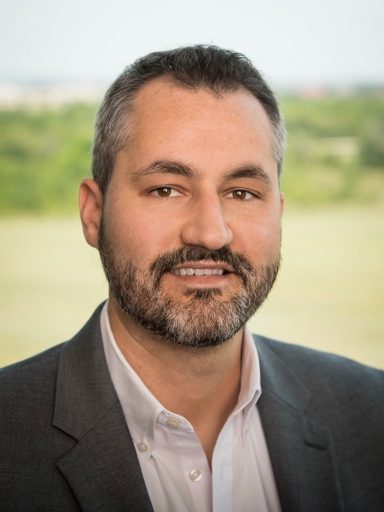How Nebraska's new tech chief is moving the state out of the era of mainframes and landlines

The state capitol building in Lincoln, Nebraska. John Elk via Getty Images

Connecting state and local government leaders
Nebraska’s technology infrastructure is outdated and its data is largely neglected. Matthew McCarville, the state’s new CIO, has big plans to change that, and it starts with the state’s employees.
Nebraska Chief Information Officer Matthew McCarville has only been in office since April, but already he has big plans to bring the state’s IT infrastructure into the 21st century.
McCarville, who previously served as CIO and assistant vice chancellor of IT services and operations at the University of Colorado, Denver, learned upon taking the job that Nebraska still largely relies on decades-old mainframe technology and an on-premise data center, with no centralized data analytics office. Many state employees still even have landlines, although since the COVID-19 pandemic fewer still use their desk phones.
But while McCarville’s plans call for updating those old technologies with new ones, some of the challenges the state faces aren’t tech-based. It’s not just technology that needs modernizing, McCarville said during a keynote interview at this week’s Nextgov/FCW and Route Fifty Cloud Summit. There’s also a need to “modernize the IT mindset” among state government and its employees, by reskilling them to work with new technology including a multicloud approach that also uses on-premise facilities.

“We're doing a lot of these changes that might seem abrupt to the state staff, because they've been doing things this way for 40 years,” McCarville said. “But in the business sector, this would be something where you'd look at the bottom line and go, ‘Yeah, we're going to make that decision.’”
One of McCarville’s first decisions as CIO has been to hire a chief data officer. Nebraska houses oodles of data but has never quite figured out how to use it to drive efficiencies or in areas like performance metrics. Using data to find inefficiencies can help with modernizing the mainframe and business processes.
“We don't know the standard amount of time [it takes to do] anything outside of our service desk hours, and that's because it's a service desk and that's how they measure things,” McCarville said. “When we start looking at the data from an analytics level, we can really start determining what processes are off the target number.”
Upgrading outdated technology, getting buy-in and reskilling employees, and organizing data to make the Nebraska government efficient and effective is one part of McCarville’s big plans. The other is protecting the state’s infrastructure and data from nefarious actors.
Like every other state government, Nebraska faces constant cybersecurity threats and attacks from hackers and well-intentioned employees clicking on phishing emails and inadvertently exposing sensitive data. Finding cost-effective solutions from vendors is the main priority right now, McCarville said, but longer-term actions are needed at a legislative level to make cybersecurity investment more sustained.
“Having seen this in different states already, I want to make sure that we're using every dollar in Nebraska as wisely as possible, because cybersecurity has not been a budgeted line item in the CIO’s budget, so I don't have dollars to spend on security,” he said. “We're working with the legislature to change that moving forward, but I'm using the cash fund that our agency has to fuel cybersecurity expansion at this point in time, and those are not cheap tools.”
The state also is looking to set up a joint security operations center in partnership with the state’s university and college systems and its county and municipal governments, to monitor and respond to threats in real time.
That center will offer training at Nebraska’s various higher education institutions, providing a talent pool that the state can hire from. McCarville has already reclassified the state’s chief information security officer role to manage that initiative as well as risk management, compliance and other cyber areas.
The effort speaks to broader workforce issues that Nebraska must confront, as like with many states, they have aging employees whose decades of institutional knowledge must be replaced. In fact, McCarville said many workers were eligible to retire a decade ago but have stayed due to their “heart for service for our state,” as well as fears that no one can replace their knowledge.
High school internships will be a key way to help bring on the next generation of state workers, McCarville said, especially as Nebraska will cover their college education in return for continued public service. And while it will always be difficult to compete with the private sector on salary and other benefits, finding and retaining good interns can help bridge the retirement gap.
“We're trying to change the way Nebraska looks at our talent pipeline and go to all the public and private universities in our state and be that top employer,” McCarville said. “I will never pay what Amazon, Microsoft or Google pays, but the reality is, they're not hunting [for job applicants] in Nebraska very much. … I'm trying to be the one where they see stability and they see a pretty good paycheck.”
McCarville said all these initiatives have received strong support from Nebraska Gov. Jim Pillen, who has brought his business background as chair of Pillen Family Farms—and one of the state’s biggest landowners and ranchers—to the governorship. Finding a way to deliver government services while saving taxpayer money is crucial, he said.
“Looking at this from an efficiency standpoint, there's a lot of things in government that stay entrenched because that's the way we do things,” McCarville said. “There's a cost to change, both in talent and staff hours and in the hardware and software itself, and because the money may not be allocated in the budget, you just kick the ball down the road. This governor is not about that.”

NEXT STORY: Slow progress towards more secure EBT cards highlights the challenges ahead for states






